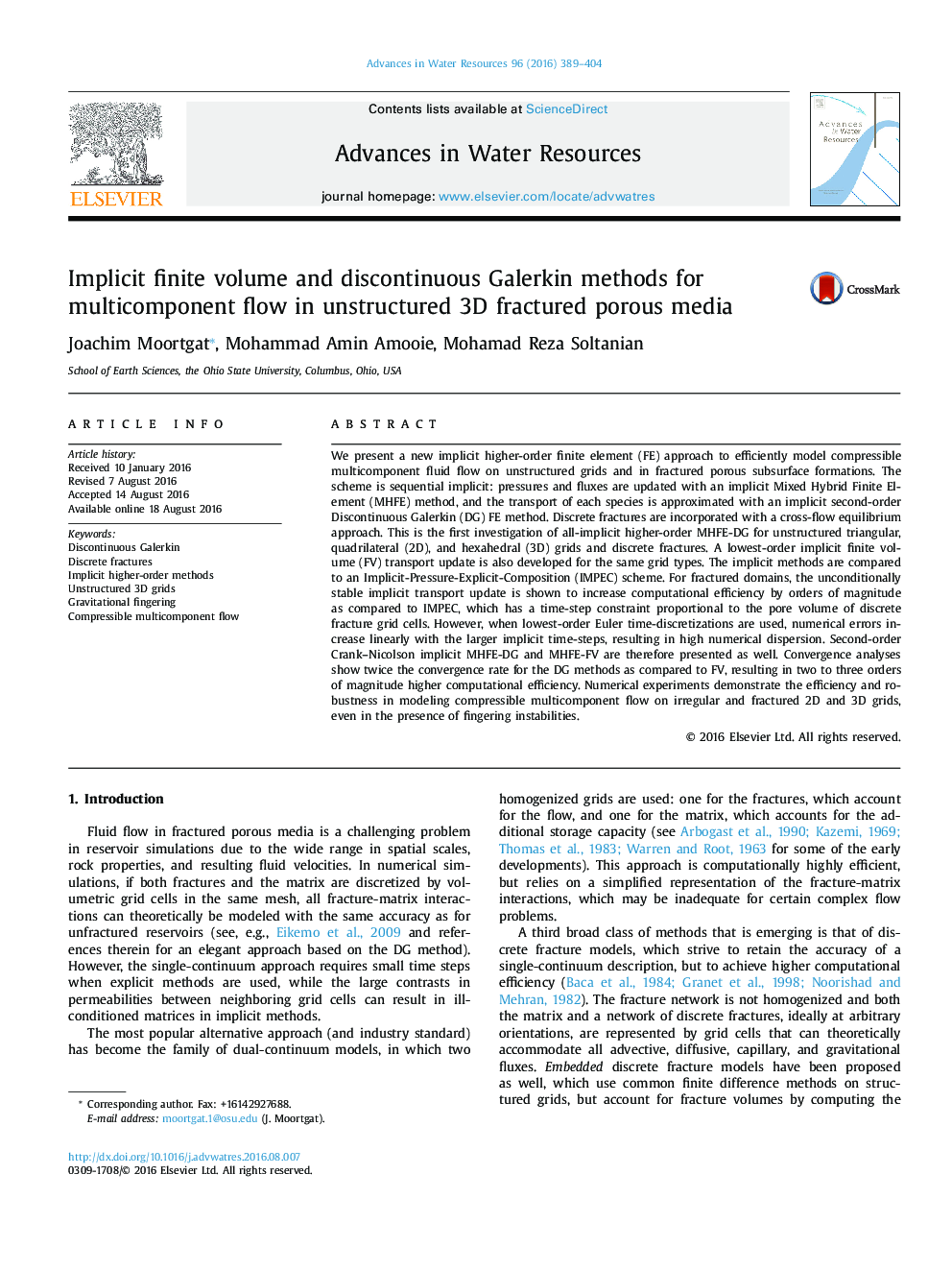| Article ID | Journal | Published Year | Pages | File Type |
|---|---|---|---|---|
| 6380541 | Advances in Water Resources | 2016 | 16 Pages |
Abstract
We present a new implicit higher-order finite element (FE) approach to efficiently model compressible multicomponent fluid flow on unstructured grids and in fractured porous subsurface formations. The scheme is sequential implicit: pressures and fluxes are updated with an implicit Mixed Hybrid Finite Element (MHFE) method, and the transport of each species is approximated with an implicit second-order Discontinuous Galerkin (DG) FE method. Discrete fractures are incorporated with a cross-flow equilibrium approach. This is the first investigation of all-implicit higher-order MHFE-DG for unstructured triangular, quadrilateral (2D), and hexahedral (3D) grids and discrete fractures. A lowest-order implicit finite volume (FV) transport update is also developed for the same grid types. The implicit methods are compared to an Implicit-Pressure-Explicit-Composition (IMPEC) scheme. For fractured domains, the unconditionally stable implicit transport update is shown to increase computational efficiency by orders of magnitude as compared to IMPEC, which has a time-step constraint proportional to the pore volume of discrete fracture grid cells. However, when lowest-order Euler time-discretizations are used, numerical errors increase linearly with the larger implicit time-steps, resulting in high numerical dispersion. Second-order Crank-Nicolson implicit MHFE-DG and MHFE-FV are therefore presented as well. Convergence analyses show twice the convergence rate for the DG methods as compared to FV, resulting in two to three orders of magnitude higher computational efficiency. Numerical experiments demonstrate the efficiency and robustness in modeling compressible multicomponent flow on irregular and fractured 2D and 3D grids, even in the presence of fingering instabilities.
Related Topics
Physical Sciences and Engineering
Earth and Planetary Sciences
Earth-Surface Processes
Authors
Joachim Moortgat, Mohammad Amin Amooie, Mohamad Reza Soltanian,
